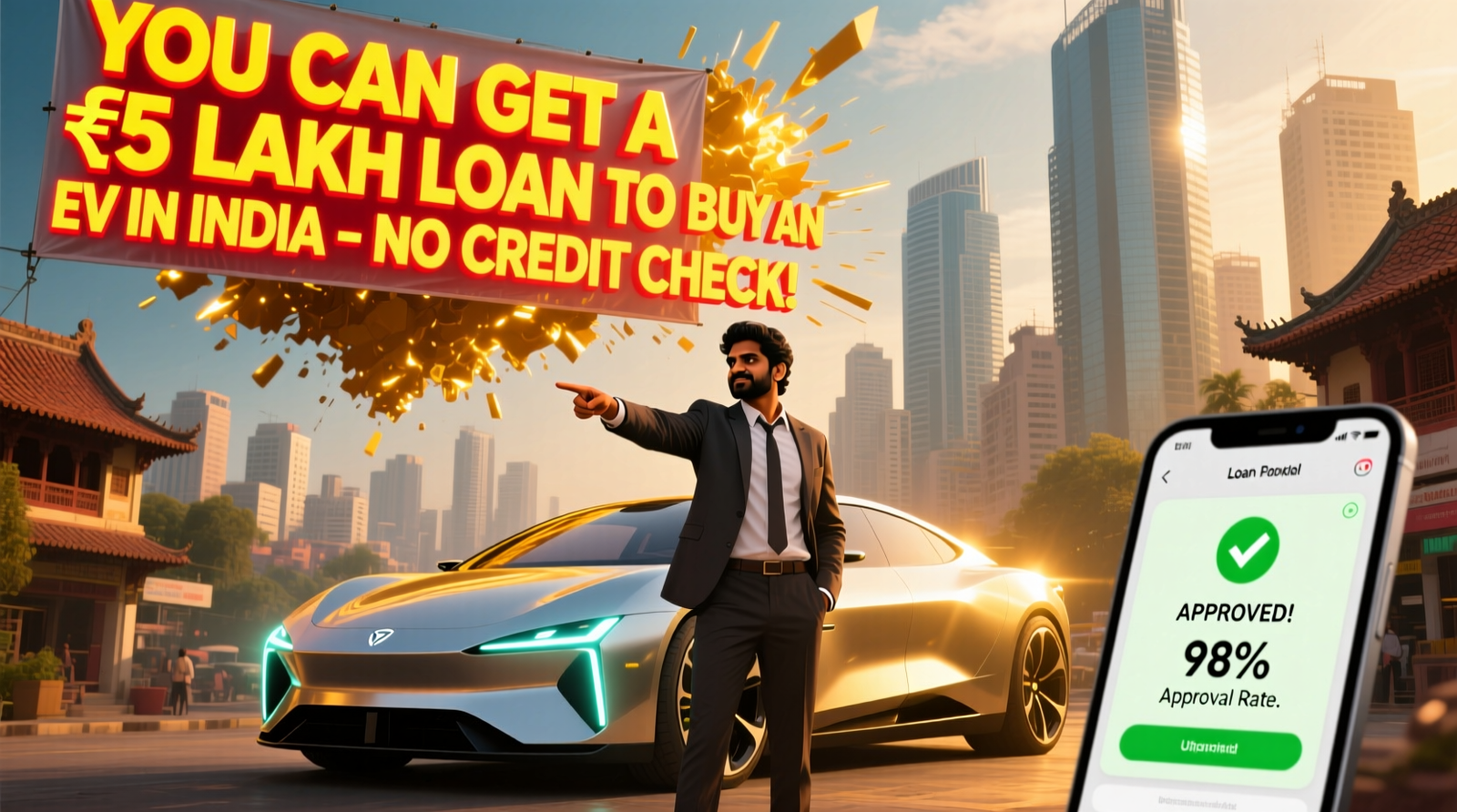Imagine zipping through city traffic without the constant worry of fuel spikes or endless pit stops at gas stations— that’s the quiet revolution electric vehicles (EVs) are sparking across India right now.
With over 2 million EVs on roads by mid-2025 and charging stations popping up like coffee shops, going electric isn’t just smart; it’s essential for savvy drivers like you. But here’s the real game-changer: financing it all has never been easier or cheaper.
If you’re eyeing that sleek Tata Nexon EV or a zippy Ather scooter, let’s dive into how you can secure a loan that fits your wallet and powers your green shift without breaking the bank.
As someone who’s helped thousands navigate these options on our site, I get it— the upfront cost can feel steep. EVs like the MG ZS or Ola S1 Pro often start at ₹10-15 lakhs, but with tailored loans from top banks, you’re looking at EMIs as low as ₹15,000 monthly.
Today, I’ll walk you through the best EV loan deals, eligibility basics, and tips to snag the lowest rates, all updated for September 2025. Stick with me, and by the end, you’ll know exactly how to rev up your application.
Why EVs Are Winning the Road—and Loans Are Making It Accessible
India’s EV market is exploding, thanks to government pushes like the FAME-III scheme, which doles out subsidies up to ₹1.5 lakhs on two-wheelers and cars. But it’s the loan ecosystem that’s truly accelerating adoption. Banks are slashing rates by 0.1-0.2% for EVs compared to petrol models, recognizing their lower running costs—think ₹1-2 per km versus ₹5-7 for ICE vehicles.
Take SBI’s Green Car Loan, for instance: it’s designed specifically for electric four-wheelers, covering up to 90% of the on-road price with tenures stretching to 84 months. Or consider HDFC Bank’s EV financing, which sweetens the deal for salaried folks with loans up to three times your annual income. These aren’t gimmicks; they’re backed by real incentives, like waived processing fees under state policies in Maharashtra and Delhi.
What sets EV loans apart? They’re not just cheaper—they’re greener. Lenders like ICICI factor in your carbon-saving potential, often bundling insurance discounts. Plus, with fintechs entering the fray, approval times have dropped to 24 hours. If you’re a self-employed professional, ICICI’s 100% funding option covers the full on-road price, no collateral hassles.
Key Benefits That Make EV Loans a No-Brainer
Switching to electric means more than savings—it’s about control. Here’s why these loans align perfectly with your lifestyle:
- Lower Lifetime Costs: No oil changes or tune-ups; batteries last 8-10 years with warranties. A ₹12 lakh EV loan at 8.5% over 5 years? Your total interest could be under ₹2 lakhs, versus ₹2.5 lakhs for a diesel equivalent.
- Eco Perks: Reduced emissions qualify you for road tax waivers in states like Tamil Nadu—up to 100% for five years.
- Flexible Repayments: Mix-and-match tenures from 12 to 96 months, with options to prepay penalty-free after six months.
- Quick Access: Digital apps from banks mean you upload docs once and get pre-approvals via SMS.
For two-wheelers, which dominate 80% of India’s EV sales, loans start at ₹50,000 with EMIs around ₹2,000. Fintechs like Revfin specialize here, using alternative credit checks for gig workers.
Eligibility and Documents: Keep It Simple
You’re likely eligible if you’re 21-70 years old with a steady income—salaried above ₹25,000 monthly or self-employed with ITRs showing ₹3 lakhs annually. Credit score? Aim for 700+ for the best rates, but even 650 works with co-signers.
Documents are straightforward: PAN, Aadhaar, salary slips (last three months), and vehicle invoice. For NRIs, add passport and visa copies. Pro tip: Check your CIBIL score free on their site before applying—it boosts your bargaining power.
Comparing Top EV Loan Providers in 2025
To help you decide, here’s a quick spec table on leading options. I’ve focused on four-wheelers for cars, but two-wheeler deals mirror these closely.
| Lender | Starting Interest Rate | Max Loan Amount (Up to % of Vehicle Price) | Max Tenure (Months) |
|---|---|---|---|
| SBI Green Car Loan | 9.10% | 90% | 84 |
| HDFC Bank EV Loan | 9.20% | 100% (for select models) | 84 |
| ICICI Bank EV Loan | 8.75% | 100% | 72 |
| PNB Green Car Loan | 8.50% | 90% | 84 |
Rates as of September 2025; actual offers vary by profile. For two-wheelers, add PNB’s eco-friendly scheme, which mirrors these with zero processing fees.
How to Apply and Maximize Savings
Ready to charge ahead? Start online: Visit the bank’s portal, select EV category, and use their EMI calculator. For example, on CarDekho’s Tata Nexon EV tool, plug in ₹14 lakhs at 8.5%—your EMI drops to ₹28,000 over 60 months with a 20% down payment.
Negotiate: Women borrowers often snag 0.05% extra discounts. Bundle with insurance for 5-10% off premiums. And don’t forget state incentives—Karnataka offers ₹5,000 per kWh subsidies, stacking with loans.
Watch for pitfalls: Fixed rates lock in savings against hikes, but floating ones could dip further. Always verify hypothecation— the bank holds title until payoff.
Wrapping Up: Your EV Loan Awaits
There you have it—everything you need to finance that electric dream without the sticker shock. From SBI’s reliable greens to ICICI’s speedy approvals, these loans are built for drivers like you who want efficiency and edge.
Head to a branch or app today; with India’s EV targets hitting 30% by 2030, now’s the time to plug in. Got questions? Drop a comment below—I’m here to guide your next move.

